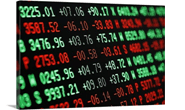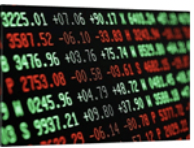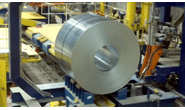Futures

Hot Rolled Futures Drop to the Pychological $500 Level
Written by Jack Marshall
September 22, 2016
The following article on the hot rolled coil (HRC) and financial futures markets was written by Jack Marshall of Crunch Risk LLC. Here is how Jack saw trading over the past week:
The focus in HR this past week has been primarily in Q4’16 and 1H’17. Futures prices have dropped to the psychological $500 level and just below for this futures range. We are seeing more interested buyers down at these sub $500 levels however the notional amounts have shrunk as participants behave more cautiously. The levels also represent about a 50% retracement of the price increase from the mid $300 dollar level to the $640 level. The forward discount for this period is running just over $30/ST based on the last reported index release.
We saw Q4’16 and 1H’17 close out last week at $512/ST [$25.60/cwt] and $510/ST [$25.50/cwt] with roughly 13,560 ST trading. This week has been a bit quieter with Q4’16 trading down at $505/ST [ $25.25/cwt] in 1,000 ST for the quarter, and with Q2’17 trading down to $503/ST [$25.15/cwt] in 1,000 ST for the quarter. Following the release of the index on Wednesday Q1’17 traded at $495/ST [$24.75/cwt] in 900 ST for the quarter. Cal’17 also traded at $495/ST in just 200 ST per month.
It is worth noting that the price differential between the spot month future and Cal’17 continues to contract. The end of last month it was $60 and it is now down to $47. It is also surprising that the Cal’17 curve remains basically flat with just a $5 spread between Jan’17 and Dec’17. Not to suggest that past 12 months of futures month end settlements in HR will be a good predictor of future settlements but it is worth noting that only one month settled within $10 of the previous month. Otherwise the average settlement differential between the last 12 futures settlements is $36 with the low being $7 and the high being $104. (CME HR Settlements for Sep’15 $444, Oct’15 $412, Nov’15 $380, Dec’15 $364, Jan’16 $389, Feb’16 $396, Mar’16 $420, Apr’16 $486, May’16 $590, Jun’16 $631, Jul’16 $621, Aug’16 $592.) A new set of circumvent lawsuits submitted to the Commerce department by injured U.S parties against Vietnam steel producers should generate some added volatility to these markets.
Spot 529
Q4’16 502
Q1’17 498
2H’17 493
Cal’17 495
Cal’18 520
However current buying interest in Cal’17 is coming in around $250 GT with 1H’17 last trading at $258/GT.
Scrap (BUS = #1 busheling scrap)
Lower HR prices are impacting BUS price expectations here this week. In the near dates BUS buyers have retreated with Q4’16 last trading last week at $245/GT. Offers remain at $250/ GT for the period in small size. Market sentiment in BUS is a bit bearish but no firm indication on where October will come in yet. Maybe flat to slightly lower. Adding to the bearish sentiment in scrap is that CFR Turkish exports have been slowing down and prices have been declining slightly, down $6 since Monday.
Below are two graphs showing the history of the hot rolled and busheling scrap futures forward curves. You will need to view the graphs on our website to use their interactive features, you can do so by clicking here. If you need assistance with either logging in or navigating the website, please contact our office at 800-432-3475 or info@SteelMarketUpdate.com.

Jack Marshall
Read more from Jack MarshallLatest in Futures

HRC futures: Market awaits catalyst from a fragile floor
The US hot-rolled coil (HRC) market feels steadier as the 4th quarter begins - not strong, but no longer slipping either.

HR Futures: Plummeting open interest shows complacent buyers ignoring ’26 risk
A tour of the economy as it relates to hot-rolled coil futures.

HR Futures: Rangebound amid muted summer trade
Since the last writing of this article, CME hot-rolled coil (HRC) futures have been largely steady and lifeless, though there’s been some brief bouts of intraday volatility.

HR Futures: Market blues turn bearish
The cautious neutrality and summertime blues we discussed just a few weeks ago have evolved into something decidedly more bearish.

HR Futures: Curve switches gears
After a period of backwardation driven by headlines and CRU index anchoring, the CME HRC curve structure has undergone a notable shift.


